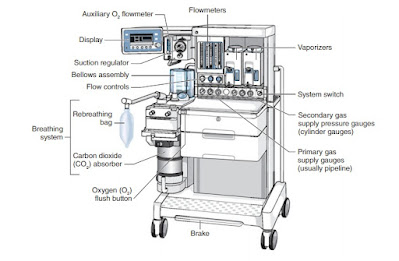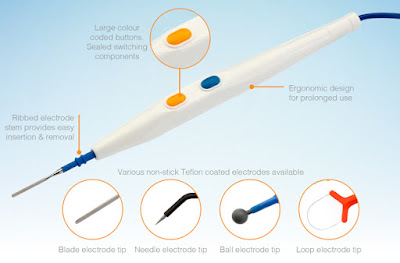Surgical Site Infection, its Types & Prevention
An infection that develops at the site of surgery is known as a surgical site infection (SSI). SSIs can happen up to a year after some procedures, like knee replacements, or within 30 days following an operation. They can be minor to severe, cause healing to be delayed, or possibly result in sepsis or death.
- Surgical site infections (SSIs) are a common complication of surgery, affecting up to 5% of patients who undergo invasive procedures.
- SSI risk factors include poor hygiene, diabetes, obesity, smoking, and certain types of surgery.
- SSIs can be prevented by following proper surgical techniques, using appropriate antibiotics, and maintaining good hygiene before and after surgery.

Types Of SSI
Superficial Incisional SSI
Infection occurs within 30 days of the surgical procedure. Infection involves only skin or subcutaneous tissue of the incision and at least one of the following symptoms from the superficial incision unless the wound is culture negative:
1. Purulent drainage, x-ray with or without laboratory confirmation, from the incision
2. Organisms isolated from an aseptically obtained culture of fluid or tissue
3. At least one of the following infections' warning signs or symptoms:
a. Pain or tenderness
b. Localized swelling
c. Redness or heat
d. Surgeon deliberately opens the incision
4. Diagnosis of superficial incisional SSI by the surgeon or physician
Do not report the following conditions as superficial SSI:
1. Stitch abscess (minimal inflammation and discharge) limited to the points of suture penetration
2. Infection of episiotomy or newborn circumcision site (these have separate criteria)
3. Infected burn wound
4. Incisional SSI that extends into the fascial and muscle layers
Deep Incisional SSI
Infection occurs within 30 days after the procedure if no implant is left in place or within 1 year if an implant is left in place and the infection appears to be related to the procedure. Infection involves deep soft tissues (e.g., fascia and muscle layers) of the incision and at least one of the following symptoms unless the site is culture negative:
1. Purulent drainage from the deep aspects of the incision, but not the organs or compartments
2. A deep incision spontaneously dehisces or deliberately opened by the surgeon because of:
a. Fever 100.4° F (38° C)
b. Localized pain
3. Diagnosis of deep SSI by physician
or surgeon
Additional factors:
1. Report combined superficial and deep infections as deep SSI
2. Report organ space or deep infection that drains through the incision as deep SSI
Treatment typically includes antibiotics and may involve further surgical intervention if the infection is severe.
Organ / Space Surgical Site Infections (SSIs)
Organ / Space Surgical Site Infections (SSIs) are infections that occur within an organ or body cavity after surgery. They can occur when bacteria enter the body during the surgery and infect the surrounding tissues. Organ/space SSIs are considered more serious than superficial or deep incisional SSIs as they can lead to sepsis and potentially death. Risk factors include prolonged surgery, poor wound healing, and certain underlying medical conditions. Treatment typically includes antibiotics and may involve further surgical intervention if the infection is severe.
In the event that a patient does develop an SSI, it is essential to identify the cause and implement appropriate treatment. This may include antibiotics, wound debridement, or in some cases, a return to the operating room for surgical intervention.
Overall, SSIs are a serious complication of surgery that can have significant consequences for patients. However, through proper prevention and management, the risk of infection can be minimized. By understanding the risk factors and implementing appropriate measures, healthcare professionals can help ensure the best possible outcomes.
Preventing surgical site infections (SSIs) is crucial for patient safety and recovery. Here are some key tips to help reduce the risk of SSIs:Preoperative Tips:
Patient Education: Educate patients about the importance of preoperative hygiene, including showering with antiseptic soap before surgery.
Screening and Treatment:
Screen for potential infections, such as nasal carriage of Staphylococcus aureus, and treat if necessary (e.g., with mupirocin nasal ointment).Optimize Health:
Antibiotic Prophylaxis:
Intraoperative Tips:
Sterile Technique: Ensure all surgical instruments and materials are sterile. Maintain a sterile field throughout the procedure.
Minimize Operating Time:
- Plan surgeries efficiently to reduce the duration of the procedure, as longer surgeries increase the risk of infection.
Temperature Control:
Use of Antiseptics:
Properly prepare the surgical site with appropriate antiseptic solutions (e.g., chlorhexidine or iodine).Postoperative Tips:
Wound Care:
Instruct patients on proper wound care techniques. Keep the incision site clean and dry, and change dressings as directed.Monitoring:
Follow-Up Appointments:
Education on Activity:
Advise patients on activity restrictions and proper hygiene practices to reduce strain on the surgical site during the healing process.
From The Hospital Infection Control Practices Advisory Committee: Guideline for prevention of surgical site infection, Vol. 20, No. 4, 1999.
Available at: http://www.cdc.gov/ncidod/dhqp/pdf/guidelines/SSI.pdf.



